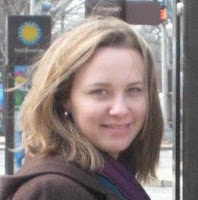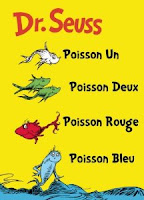With the rise of Nate Silver and the emergence of mainstream data science, we've seen many uses for predictive analytics, including the entrance of predictive modeling into the political arena. Actually, although predicting election results is a booming business now, it has been around for quite some time.
 I recently got the chance to talk to Matt Hennessy, Managing Director at Tremont Public Advisors, about a campaign he worked on for Joe Lieberman in 2006, and how they implemented predictive modeling for a successful Senate election. For those who are interested, we'll be discussing this and other examples of predictive modeling in action in a webinar on Tuesday, September 17th.
I recently got the chance to talk to Matt Hennessy, Managing Director at Tremont Public Advisors, about a campaign he worked on for Joe Lieberman in 2006, and how they implemented predictive modeling for a successful Senate election. For those who are interested, we'll be discussing this and other examples of predictive modeling in action in a webinar on Tuesday, September 17th.
Can you give us some
background on the 2006 Senate election?
In 2006 in Connecticut, Joe Lieberman was up for reelection
to the Senate as a Democrat. He had been the Vice Presidential nominee in the
2000 election and had taken a position supporting the Iraq war which upset a
lot of the Democratic base. He wound up losing the Democratic primary to Ned
Lamont who won on a big anti-war push. Once Lieberman lost the primary
election, he lost access to a considerable amount of infrastructure – union
support, door to door field workers, and all of the other boots on the ground
that he would have had were all gone. He lost most of his staff except for the
people who had been there for a decade or two. He needed to figure out how to
replace some of the advantages he’d had with other resources out there.
As someone advising him, I saw that we had a problem:
without a field operation and all of those bodies, we didn’t know exactly who
we wanted to get out the vote and who the likely voters for Lieberman were. We
had a very expensive polling operation going which was using the conventional method
to reach some conclusions about which demographics were most likely to vote,
but we decided that we needed something more.
How was the decision
made to use predictive analytics in the campaign?
The resources that normally would be used for generating
‘get out the vote’ or direct voter contact were gone the day after the primary.
Usually we’d go out and try to visit all of the potential voters, but this just
wasn’t possible anymore. We needed to figure out a way to work smarter to
compensate for a new lack of resources. We wondered if there was a way to
determine which characteristics indicated a likelihood of voting for Lieberman
so that we could figure out exactly who to pull out on Election Day. After a
conversation with Mike Laracy about performing this type of analysis, we
decided to give predictive modeling a try. Our goal was to score every registered voter on their likelihood of voting for Lieberman,
and we used Rapid Insight to build a model to do that.
We knew what data we had, the voter file, and determined
which additional information we would need to build a model, like demographic
information. Then we hired a polling company to call about 10,000 named voters in
a random phone pull so that we’d have a statistically significant result. The
poll question was a very simple yes/no question on likelihood to vote and who
each voter planned on voting for. We weren’t trying to persuade people at this
point; all of this polling was meant to influence the field side, not the
messaging side. This approach was different than what we’d been doing
before because we were calling named voters – people who actually existed and
were registered to vote and had demographic information that we could attach to
them – and polling them. Using this poll, we scored each of the 1.9 million registered
voters in Connecticut
on their likelihood of voting for Senator Lieberman.
How did predictive
analytics help the campaign?
Predictive modeling allowed us to optimize our limited resources. As opposed to working with pure assumptions, we now had an
actual score attached to each individual voter, which allowed us to spend our
resources on the voters with the highest propensity to vote for
Lieberman. At the time, it was quite a cutting-edge use of analytics – it was
the first time anyone had ever scored an entire state’s voters for the purposes
of an election.
Another thing the predictive model did was to disprove our
assumptions about who was likely to vote for Lieberman. Some of the key
indicators that we were getting from the traditional pollsters were proven to be incorrect by the model results. Based on this we changed some of our campaign messaging The model allowed us to
re-allocate our resources more efficiently and it challenged some of the notions
we held. In the end, the model did a good job of predicting who the voters
would be.
Do you think
predictive modeling affected the outcome of the election?
It’s difficult to say, but I can say that the resources that
were deployed based on the predictive model were effective. Once we started
deploying based on the modeling, the polling margins started to increase; this
was toward the end of the race, which is when this model was implemented. I
think it increased the margin of victory. The polling was showing a very tight
race, but the predictive model was showing there was a margin of victory for
Lieberman that was already there, and it was actually ahead of the polling in
this case.
How do you see
predictive modeling being used in future elections?
If you look at what the Obama campaign did with predictive
modeling – taking different factors and a complex web of data points to
pinpoint individuals who are likely to vote – it’s here. Predictive modeling is
here, it’s now; that’s the future of elections. The complexity of the work
they’re doing in this field is truly amazing. I don’t think it will be as
focused on many of the smaller races – like those below governor, but it can be
very, very effective. I think this last election confirmed that it’s a major
part of any political campaign that’s being conducted on scale. This is here to
stay.
This example of predictive modeling in action is one of three that we'll be co-presenting in a webinar with Tableau on Tuesday, September 17th, "Turbocharge your Predictive Models with Visualizations". For more information, or to register, click here.
*
Matt Hennessy has over two decades of experience in federal, state, and city government. He has built a reputation as a trusted and effective advisor to leading elected officials on public policy, communications and campaign issues. He has served as a trusted political advisor and fundraiser for candidates and political campaigns ranging from Mayor to U.S. Senator to President. Matt is an alumnus of Harvard Business School and the Kennedy School of Government where he was a Wasserman Fellow. He also holds degrees from the Catholic University of America and trinity College in Hartford.













